| Join | Official Historian | City of Stamford | Blog | About Us | |
| Jewish Historical Society | Civil War Roundtable | Contact Us | |
|
|
|
|
The Stamford Historical Society PresentsPride and Patriotism: Stamford’s Role in World War II
|
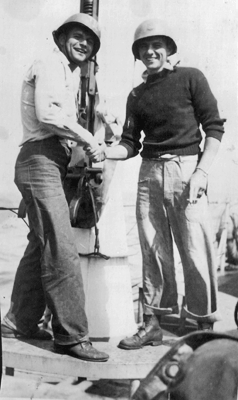 |
I (William Kesnick) was born in Bridgeport in 1923. I came to Stamford in 1924 and I graduated from Stamford High School in 1941. In 1942 I joined the Navy in New Haven. From New Haven I was sent to Newport Rhode Island Naval Training Station, then school in Florida, sub-chaser school, then to Brooklyn. I waited for my ship to be built, PC 552. It was the first ship to reach Omaha Beach, a control vessel. I saw lots of action on D-Day. Ted got aboard my ship in Staten Island before we went over, with the Captain’s approval…
I (Ted Guzda) am a Stamford native. I joined the Navy in 1942. I did my training in Newport. After that I was assigned to Staten Island Yard to repair ships. A tugboat would take me out to ships needing repairs…that’s how I came along the PC 552, once alongside I ran into Bill who asked me to come aboard…I left the yard repairs ship and stayed there without orders. Next day we left and were out in the ocean…a report came from Staten Island HQ asking if Ted Guzda was aboard ship….I told the Captain I was on report for being AWOL from Base, I had a Court Martial pending. When we returned I packed my gear, went to Admiral’s office, the Admiral looked at me, we talked and he said that my penalty would be to go back to the PC552 and stay there. I was very happy… I went back to the ship… We both made coxswains, we were in charge of the deck. We did a lot of work. The ship was 174 feet long and the ship came to Stamford on Navy Day.
Our ship bobbled in the water like a cork. We never got sick. Bill took care of the radar and we both made sure everyone did their work, though we did a lot of it because we never got sick. We were even cooks in the galley and had to feed the crew. We took a big cookbook and broke it down.
Our vessel was patrolling the Atlantic coast from New York to Cuba doing convoy duty. We did that for about a year. Then we went out to the ocean and accompanied a convoy of a huge number of ships…before the invasion. We escorted ships across the ocean. They were preparing for invasion. We went to England and then patrolled out there. We were always on maneuvers. We knew when the invasion would come because the channel was so full of ships you couldn’t count them. The sea was so rough that when we started we couldn’t make it.
WK: I kept a diary of the invasion days…
TG: We turned back to Southampton…stayed till 2 or so and heard that the invasion was on, we headed back out. We practically led the whole convoy across the Channel. The Augusta was the headquarters of the whole invasion. It was a heavy cruiser. We came alongside and they told us good luck, you’re on your own. We lead the boys into Omaha Beach.
We were the control vessel for the first wave of the invasion, they all went down, we picked up all the survivors and threw them on deck.. When we were crossing the Channel, we heard someone cry out if there was anyone from Stamford…
The sea was still rough… Bill lost his helmet while enemy planes were shooting and shore batteries were firing. We were back to back on 20 mm guns. I emptied a bucket of sand and told him to put it on his head and all you heard was shrapnel going ping, ping, ping.
The resistance to the landing was heavy. The beach was not secured till 2:30 in the afternoon...we lost over 3,000… then finally our planes did the job. I couldn’t count the number planes that went over. We couldn’t sleep. All hell had broken loose. Once the beach was secure we made an imitation harbor by sinking the Liberty ships that brought stuff over. When they got the stuff on the beach they made a breakwater. Then they made a harbor, they brought in concrete caissons and stuck them and made harbor.
We were such a small ship, the 88s that were shooting were shooting over us. The barrels of the guns could not reach down. Finally by nighttime it was over, then we had to deal with Luftwaffe. They would shoot flares to see the whole fleet. It looked like daytime out. The flares would hang in the air like chandeliers.
One PC got hit and sank from a beach shell. We lost our anchors and had to get one from one of the beached ships, then we went to the pillboxes to look… Pillboxes were real thick walled with cement.
The Germans used to have these one-man subs and we caught one but didn’t take it aboard, we turned it over to an English ship.
The weather was rough, not as rough as 5 June, you could even stand on the deck, you couldn’t fight in that weather, next day swells were heavier but we could manage, we had to hold onto the guns. There were small landing crafts – lots of seasick men, in a way the weather beat the soldiers before they reached the beach.
First part of “Private Ryan”, the movie, was very accurate...there were limbs, arms etc. all over the beach.…
We had been on our boat about one month before going to the beach…we went to the Channel Islands and Jersey, etc. … then went to Cherbourg... we were refueled by transport ships…tankers… we would go over and refuel that way. They would radio over so you had time to get refueled. Once the place was secured, Cherbourg was open and people could refuel in the harbor.
Once on shore in France we saw German prisoners working…big tanks pulling caissons on tank trails…we took a tank ride to the front…when we got back the captain said, “No more shore leave for you”.
Normandy was hell, we didn’t expect to come back when we went in…we were under tons of fire night and day, mines, aerial bombs…guns…
We had about 6 coxswains. We went to England…left our ship…back on transport…Captain didn’t need us, so off for shore duty, went to Guantanamo Bay.
TG was a dockmaster there…in charge of Marines coming into base
WK: I ran the admiral’s barge, ran officer’s to club etc… got enough points and got out of the service.
WK 1947, TG 1951 exit service.
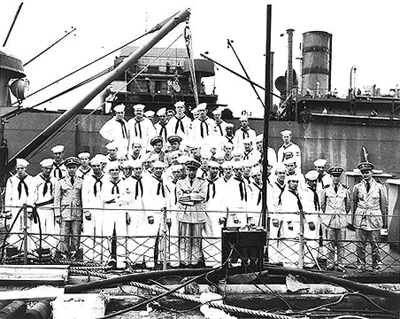 |
 |
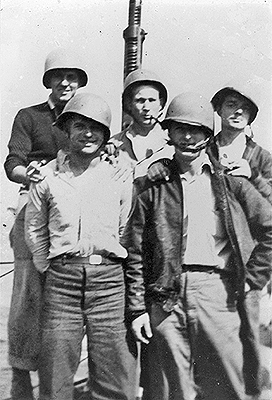 |
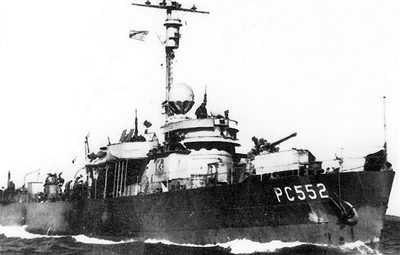 |
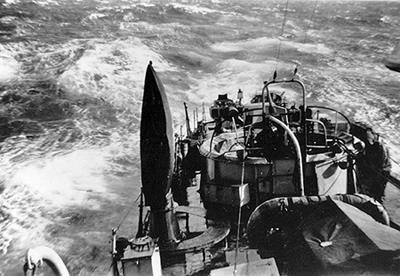 Bill’s comment: “I always liked that picture” |
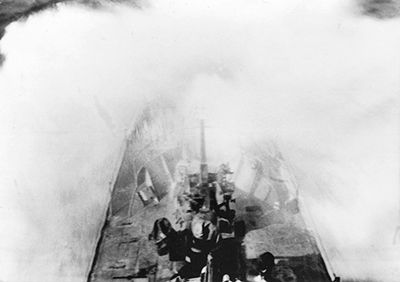 |
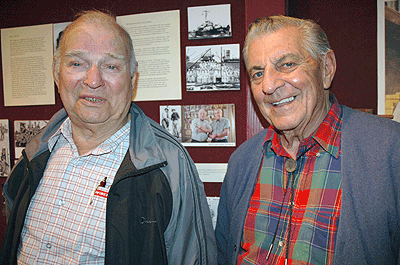 |
Photos Courtesy Mssr. Guzda & Kesnik, © Laurie Guzda (1)
Related Story from The Advocate, June 6, 2005
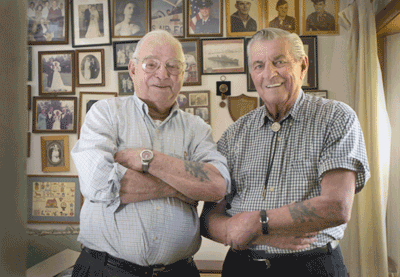 Staff photo by Andrew Sullivan, The Advocate Copyright © 2005, Southern Connecticut Newspapers, Inc. |
STAMFORD – It was a heck of a day to lose a helmet. Bullets were flying, bombs were exploding, shrapnel and hot machine-gun shells were raining on him, and Willie Kesnick was bare-headed. It was June 6, 1944, the day the Allies invaded Normandy, and Kesnick was an 18-year-old coxswain firing a gun aboard Patrol Craft 552, the U.S. Navy's control ship for the attack on Omaha Beach. But he didn't have to worry. Ted Guzda, his childhood buddy, was at his back firing another gun. Guzda, who was the same age and rank, spotted a bucket of sand on deck nearby, emptied it and tossed it to Kesnick. read all |
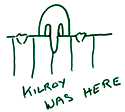 Introduction
Introduction
Veterans
Battles
Stamford Service Rolls
Homefront
Exhibit Photos
Opening Day